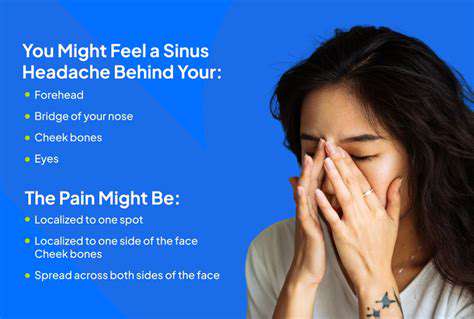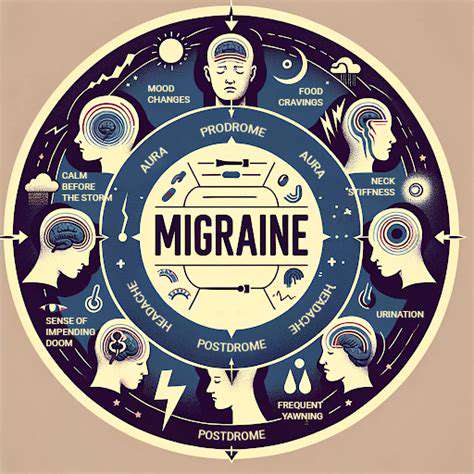
Identifying Sinus Headache Pain
People experiencing sinus headaches often report a distinct throbbing pain concentrated in the forehead, cheekbones, or behind the eyes. This discomfort tends to intensify when changing head positions and frequently comes with a sensation of pressure or fullness in those areas. Recognizing the exact location of the pain helps identify which sinuses are affected and aids in diagnosis.
Distinguishing sinus headaches from migraines or tension headaches is absolutely essential for proper treatment. Though symptoms may overlap, the unique pain patterns and additional symptoms provide critical clues for accurate identification.
Pressure and Fullness Sensation
One of the most noticeable aspects of sinus headaches is the persistent feeling of pressure or congestion within the sinus cavities. Many patients describe this as worsening when bending forward or lying flat. The discomfort can become severe enough to disrupt normal routines.
Simple actions like looking downward or tilting the head forward often make the pressure feel significantly worse, creating challenges for everyday tasks and overall wellbeing.
Facial Pain and Tenderness
Discomfort in facial areas like the forehead, cheeks, or eye regions commonly occurs with sinus headaches. The pain might feel sharp, dull, or pulsating, and the affected areas often become sensitive to touch. This tenderness serves as a useful diagnostic marker when differentiating sinus-related pain from other headache types.
Nasal Congestion and Discharge
Nasal blockage frequently accompanies sinus headaches, ranging from slight stuffiness to complete obstruction. Severe congestion can make normal breathing difficult and substantially increase the overall discomfort of a sinus headache episode.
Mucus discharge often occurs as well, with variations in color and thickness potentially indicating different underlying causes that require attention.
Fever and Fatigue
Some patients develop fever and exhaustion alongside sinus headaches, suggesting possible infection or significant inflammation. Persistent fever or extreme tiredness should never be ignored, as these signal the need for professional medical evaluation.
When fever and fatigue appear with sinus symptoms, immediate medical consultation becomes critically important to prevent potential complications.
Headache Aggravation by Head Movement
Many sufferers notice their sinus headache pain worsens with head movement. This distinctive feature helps differentiate sinus-related pain from other headache types. Simple actions like bending forward, lying down, or quick head turns can dramatically increase discomfort levels.
Associated Symptoms: Cough and Postnasal Drip
Additional symptoms like persistent coughing or postnasal drip sometimes accompany sinus headaches. These secondary symptoms offer valuable diagnostic information about the headache's origin. When present, they may indicate more serious infection requiring medical attention.
Continuous coughing and postnasal drip combined with other sinus symptoms should prompt a visit to a healthcare provider for proper assessment.
Migraine Symptoms: A Comprehensive Overview

Understanding the Spectrum of Migraine Pain
Migraine symptoms present differently across individuals, with pain intensity and duration varying widely. While pulsating head pain remains characteristic, migraines involve numerous other symptoms including nausea, vomiting, light/sound sensitivity, and sometimes visual disturbances called auras. Recognizing this full range of symptoms proves vital for accurate diagnosis and effective treatment.
Early symptom identification allows for timely intervention, potentially preventing the severe pain and disability that migraines often cause.
Visual Disturbances and Aura
Visual phenomena known as auras affect some migraine patients, appearing as shimmering lights, zigzag patterns, blind spots, or temporary vision loss. These visual symptoms frequently serve as warning signs, appearing before headache onset and providing valuable time for early treatment.
Not all migraine sufferers experience auras, and their presence doesn't necessarily indicate worse prognosis. However, any unusual visual symptoms warrant professional medical evaluation for proper diagnosis and management.
Headache Characteristics and Intensity
Migraine pain typically manifests as throbbing or pulsating discomfort, often concentrated on one side of the head. Pain intensity ranges from moderate to severe, frequently disrupting daily functioning. The debilitating nature of severe migraine pain makes normal activities like working, concentrating, or socializing extremely difficult.
Many patients also describe accompanying head pressure sensations, adding complexity to symptom management. Carefully tracking your specific headache patterns represents a crucial first step toward developing effective treatment approaches.
Nausea and Vomiting: Common Accompanying Symptoms
Gastrointestinal symptoms like nausea and vomiting frequently accompany migraine attacks, significantly impairing functionality during episodes. These symptoms can become severe enough to cause dehydration and additional discomfort. The combination of head pain with nausea creates particularly challenging management situations.
While research continues into the exact mechanisms, current understanding suggests these symptoms relate to complex neurochemical interactions during migraine episodes.
Sensitivity to Light and Sound: Environmental Triggers
Heightened sensitivity to light (photophobia) and sound (phonophobia) commonly occurs with migraines, often making normal environments intolerable during attacks. These sensitivities can actually trigger migraine episodes in some cases, creating a vicious cycle. Bright lighting and loud noises frequently worsen symptoms, making environmental control important for management.
Practical solutions like wearing sunglasses, using ear protection, or seeking quiet spaces can help alleviate discomfort during attacks and potentially prevent future episodes. Identifying personal environmental triggers forms a key component of comprehensive migraine prevention strategies.
